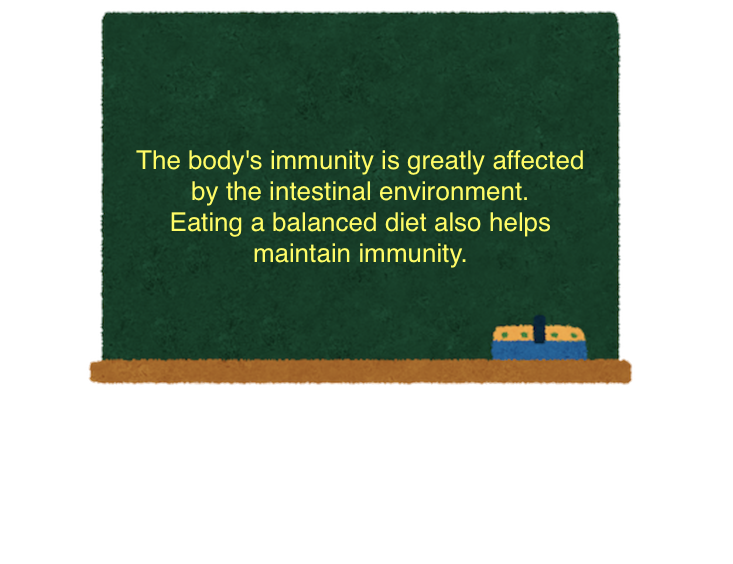Meal
Relationship between immunity and diet
Immunity can be adjusted by adjusting the intestinal environment.
There are three types of intestinal bacteria, good bacteria, bad bacteria, and opportunistic bacteria, in the intestine, and if they can be maintained at a ratio of "2: 1: 7", immune cells will be activated.
In addition, a well-balanced diet of various foods leads to an increase in the diversity of these intestinal bacteria.

Excessive intake of fat and protein causes an increase in bad bacteria.
Intestinal environment×immunity
About 70% of the body's immune cells are gathered in the intestine. In other words, the largest immune system in the human body is the intestine. Therefore, adjusting the intestinal environment leads to improving immunity.
Intestines
sterilized by stomach acid, but pathogens that have passed through without dying, reach the small intestine and are then taken up by the "Peyer's patch" on the intestinal wall. Peyer's patch is an immune system peculiar to the intestine where lymph nodes existing between the cilia of the small intestine are gathered. Above that, there are specialized cells called M cells, which are the starting point of the immune response in the intestine. In addition, there are major immune cells such as dendritic cells, T cells, and B cells in Peyer's patches, and if it is determined that the invading cells are harmful to the human body, "IgA antibody" I will get rid of it by issuing an immune substance.
Summary


